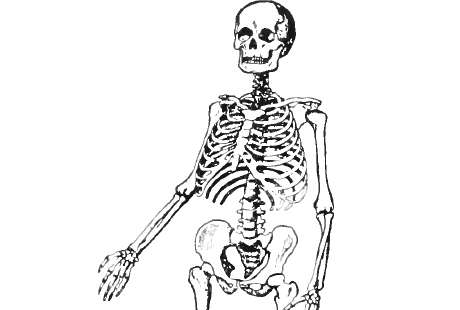<![CDATA[As the saying goes, the University of Pennsylvania actually had a skeleton in its closet, and an old one at that. Scientists at the Penn Museum have announced that they have discovered a 6500 year old skeleton in one of the university closets in the basement of the museum. According to reports this skeleton belonged to a 5’9” male who was considered to be well built and at least 50 years old. The remains of this skeleton were lying untouched for more than 85 years in a coffin shaped box and there were no accompanying documents to confirm the identity of the person this skeleton belonged to. The Penn Museum recently released a statement that it plans to digitize old records this summer and also bring back to light the history of this ancient skeleton. Museum records found in this digitization program have revealed that the skeleton was found in the year 1929 – 30 in Ur, an ancient city in southern Iraq. This particular expedition was led by the Penn Museum together with the British Museum and was headed by Sir Leonard Woolley. The explorers had excavated a total of 48 graves, all of which dated back to the Ubaid era. The Ubaid culture was believed to be characterized by huge village settlements which lasted on the plains of southern Mesopotamia until 4000 B.C. The Museum scientists are referring to the skeleton as “Noah” because it outlived a great flood, perhaps even the one that acted as a precursor to the Biblical story. In what might come as a surprise to many of our readers, this skeleton was buried with pottery vessels at its feet and is considered to be at least 2000 years older than the world famous “royal tombs” of Mesopotamia that were also discovered in Ur. It is said that after the Royal Cemetery was discovered by Woolley, he kept digging another for another 40 feet until he found graves cut into the silt. This was the place where the Penn museum skeleton was found. This finding also indicated that the man had lived in Ur after a great flood had washed away the land long ago. William Hafford, the Digitization Project Manager at Penn believes that this skeleton belongs to the very man whose has been mentioned in the Gilgamesh epic as the “man to have survived the great flood”. He also offered accounts of how the skeleton reached the museum in the first place. The remains were shipped by Woolley himself to London and then on to Philadelphia, where it finally rested in an uncatalogued box for a period of 85 years. Archaeologists believe that these re-discovered skeletons, particular the ones as rare as this one, should open up an entirely new avenue of research possibilities. Modern day scientific techniques could help mankind to learn new information about the diseases, origins, stress, diet and trauma that prevailed at the time, and discoveries that were missed earlier due to lack of modern scientific equipment could finally be brought into the limelight.]]>
6500 Year Old Skeleton Found in University of Pennsylvania
